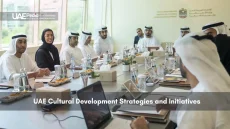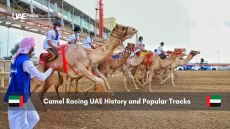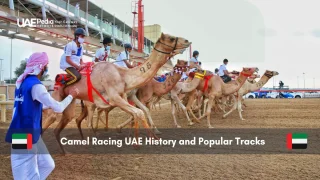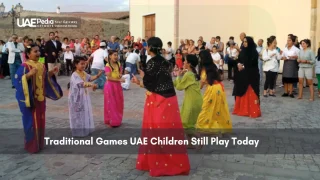What if the world’s most futuristic skyline held secrets older than its glass towers? Beneath the shimmer of Dubai’s Burj Khalifa and Abu Dhabi’s Louvre, a quieter story unfolds—one where Bedouin poetry meets AI-powered ambitions.
This nation’s heartbeat pulses between tradition and transformation. Families once navigating dunes by starlight now guide startups in co-working spaces. Yet Friday gatherings still smell of cardamom-spiced coffee in majlis rooms, where elders share tales of pearl divers and falconry.
You’ll notice this duality everywhere. Souks haggling over saffron sit minutes from Michelin-starred kitchens. Calligraphy-adorned mosques mirror the curves of Zaha Hadid’s architectural wonders. It’s not a clash—it’s a conversation.
Three things anchor this evolution:
- Rooted resilience: Desert survival skills now fuel adaptability in global markets
- Invisible threads: Shared values like hospitality bridge generations
- Global crossroads: 200+ nationalities add new hues to the cultural palette
Foundations of UAE Cultural Identity
Imagine a land where the whispers of the desert guide the rhythm of urban life. Here, camel tracks fade into metro lines, and the same hands that once cast fishing nets now code apps. This is where cultural heritage breathes through every innovation—a dance older than oil rigs and robotics.
Intertwining Heritage and Modernity
Bedouin resilience lives in unexpected places. Families still gather for ghaf tree shade talks, just as their ancestors did. But today’s conversations mix tales of pearl divers with startup funding rounds. Traditional sadu weaving patterns now inspire fashion runways, proving threads of history never fray.
Bedouin Traditions and Pearling Legacies
Pearl diving once fed coastal villages—now it fuels museum exhibits and luxury jewelry designs. Elders teach kids star navigation using smartphone apps. Even the national dish, harees, gets vegan makeovers in trendy cafes. As one pearl merchant’s grandson told me: “We polish the past to light the future.”
Three timeless values anchor this blend:
- Hospitality that welcomes strangers like family
- Resourcefulness born from desert survival
- Community bonds stronger than skyscraper steel
Historical Roots and Evolution of Tradition
Picture sand dunes shifting into skyscrapers – this land’s story hides beneath its glass facades. Long before federation, nomadic tribes navigated seasonal patterns, their survival etched into today’s social DNA. How did camel-herding clans become architects of a 21st-century powerhouse?
From Nomadic Past to a United Nation
Bedouin adaptability forged the first social blueprint. Families moved with scarce resources, developing skills now seen in Emirati entrepreneurship. When oil emerged in the 1960s, seven sheikhdoms united faster than a falcon’s dive. As historian Dr. Ahmed Al-Mansoori notes:
“We didn’t abandon our tents – we wove their fabric into steel frames.”
Consider these pivotal shifts:
| Era | Social Structure | Key Development |
|---|---|---|
| Pre-1900s | Nomadic tribes | Pearl trade networks |
| 1892-1971 | Trucial States | British protectorate era |
| Post-1971 | Federal monarchy | Oil-driven urbanization |
The Legacy of the Trucial States
That 19th-century coastal alliance still shapes governance. Shared pearl diving risks taught collaboration – now visible in Dubai-Abu Dhabi partnerships. Traditional majlis councils evolved into modern ministries, keeping decision-making communal.
Today’s population boom (from 180,000 in 1968 to 10 million) could’ve erased old ways. Instead, heritage thrives through clever adaptations:
- Date palm irrigation techniques inspire water conservation tech
- Tribal conflict resolution informs business mediation
- Family gatherings preserve oral histories amid high-rise living
This isn’t nostalgia – it’s strategic identity-building. As one Abu Dhabi teacher puts it: “We teach kids to code, but first they learn who wrote their first story.”
Traditional Values: Family, Hospitality, and Etiquette
Step into a local home at sunset, and you’ll find the soul of this nation. Generations gather on floor cushions, laughter mingling with the clink of coffee pots. Here, ancient customs shape modern connections—like GPS for the heart.
Cultural Etiquette and Social Customs
Greetings matter. Men touch noses in a Bedouin-inspired khushmak, while women often exchange three air kisses. Remove shoes before entering living spaces—it’s about respect, not just cleanliness. During holiday traditions, expect rosewater-sprinkled hands and dates offered on silver trays.
Three unwritten rules every visitor should know:
- Always accept the first coffee pour—declining implies distrust
- Use your right hand for eating and handshakes
- Compliment hosts’ decor, but never ask about costs
The Art of Emirati Hospitality
Hospitality here isn’t politeness—it’s sacred geometry. Guests receive cardamom coffee in handleless cups, symbolizing you’re meant to stay. “Our door stays open like the desert sky,” explains Dubai resident Amal Khalaf. “Even strangers become family by sunset.”
Watch for these gestures:
- Hosts refill your cup until you wiggle it—a secret “enough” signal
- Feast spreads feature camel milk desserts and saffron rice
- Conversations flow clockwise around the majlis, ensuring all voices are heard
Through changing times, these rituals remain compass points—guiding how communities bond, celebrate, and welcome the world.
Language and Communication in the United Arab Emirates
The UAE’s streets whisper in a hundred dialects, yet speak one heart. Walk through Dubai Mall or Abu Dhabi’s Date Market, and you’ll hear Urdu haggling, Tagalog laughter, and Russian business deals—all punctuated by Arabic greetings. This linguistic kaleidoscope turns language into social glue, binding 200+ nationalities into a working whole.
Arabic remains the soul of communication, with phrases like “Salaamu aleikum” (Peace be upon you) opening doors. English serves as the bridge—80% of professionals use it daily. As Sharjah teacher Fatima Al-Mazroui notes:
“We teach math in English, but poetry in Arabic. Both are lughat al-opportunity—languages of opportunity.”
Three pillars sustain this balance:
| Language Role | Education Focus | Government Policy |
|---|---|---|
| Arabic (Official) | Mandatory in schools | Preserves heritage |
| English (Business) | STEM instruction | Drives global ties |
| Other Languages | Elective courses | Celebrates diversity |
You’ll see this blend in action. Taxi drivers switch between Hindi and Arabic. Menus list karak chai (spiced tea) alongside cappuccinos. Schools teach Emirati kids Mandarin—preparing them for tomorrow’s markets.
Key phrases to know:
- Shukran (Thank you) – Works everywhere
- Inshallah (God willing) – Shows cultural respect
- Yalla! (Let’s go!) – The UAE’s favorite motivator
Through smart education policies and grassroots exchanges, words become more than sounds—they’re the threads weaving a nation’s conversation.
The Role of Food and Culinary Traditions in UAE Culture
Your hands still smell of saffron hours after lunch—that’s Emirati cooking’s magic. Every dish tells stories of trade routes, desert survival, and shared tables where strangers become friends.
Shared Meals as a Bonding Ritual
Picture this: a floor spread with sadu-patterned mats, steaming platters of machboos (spiced rice with meat) at the center. Families eat communally, right hands tearing bread to scoop portions—a tactile tradition reinforcing unity. Friday feasts after religious celebrations see three generations laughing over luqaimat (date-syrup dumplings).
Halal Practices and Culinary Heritage
Halal isn’t just about meat preparation—it’s a philosophy. Animals are ethically sourced, blessed, and shared generously. Traditional spice blends like bezar (cumin, coriander, cinnamon) transform simple ingredients into aromatic masterpieces. As Dubai chef Mariam Al-Mazroui explains:
“Our recipes carry ancestors’ whispers. When we cook, we keep their wisdom alive.”
| Dish | Key Ingredients | Cultural Influence |
|---|---|---|
| Machboos | Lamb, basmati rice, dried lemon | Persian trade roots |
| Luqaimat | Cardamom, saffron, date syrup | Bedouin desert innovation |
| Chebab | Turmeric, yeast, sesame seeds | Indian breakfast fusion |
Global flavors thrive here too. Iranian kebabs sizzle beside Filipino adobo stalls in Deira’s markets. Yet Emirati staples remain the glue—like ghuzi (whole roast lamb over rice), served at weddings to symbolize abundance. Come hungry, leave nourished in body and spirit.
Modernization and the Blending of Old and New
Picture a city that winks at you—one eye gleaming with glass towers, the other crinkling with sun-baked clay walls. This is where cranes dance with wind towers, and the hum of driverless metros harmonizes with calligraphy-etched alleyways. Urban development here isn’t about erasing history—it’s about writing new chapters in the same ancient book.
Architectural Marvels and Urban Transformation
Abu Dhabi’s Louvre Museum floats like a silver spaceship above a restored pearling village. Dubai’s Al Fahidi district hides 19th-century coral houses behind Burj Khalifa’s shadow. “We build upward but dig deeper into our roots,” says architect Layla Al-Mansoori. Her team designs skyscrapers using patterns from Bedouin weaving—proof that progress wears tradition like a second skin.
Key projects show this dual focus:
- The Dubai Frame literally bridges old and new—a 150m golden portal connecting historic Zabeel Park to futuristic Downtown
- Sharjah’s Heart of Sharjah initiative revives 1950s souks while installing solar-powered cooling systems
- Qasr Al Hosn Fort’s 18th-century watchtower now anchors a arts district buzzing with VR exhibits
Cultural Resilience in a Globalized World
How does a nation stay grounded while reaching for the stars? Look to Friday markets where teens sell 3D-printed khanjars (traditional daggers) alongside their grandparents’ spice stalls. Or schools teaching AI coding and Arabic poetry analysis in the same classroom.
| Past Meets Present | Technology Meets Tradition | Global Meets Local |
|---|---|---|
| Palm-frond huts → Smart eco-villas | Falconry apps track birds via satellite | Michelin-starred chefs reinvent balaleet breakfast |
This isn’t just adaptation—it’s cultural alchemy. Communities use development as a tool, not a threat. Heritage festivals now livestream to millions, while robot baristas serve cardamom coffee. The result? A society that changes its shoes without losing its stride.
Impact of Expatriate Communities on the UAE Cultural Mosaic
In a bustling Dubai souk, the scent of Indian masala dances with Arabic oud—a sensory snapshot of the nation’s living mosaic. Over 200 nationalities weave their stories here, creating a social fabric where traditions cross-pollinate like date palms in spring. This isn’t just coexistence; it’s collaborative alchemy.
Diversity, Tolerance, and Multicultural Influences
Walk through Global Village during Diwali, and you’ll see henna artists from Lahore sketching patterns beside Emirati calligraphers. Filipino choirs harmonize Ramadan nasheeds in Abu Dhabi malls, while Pakistani cricket tournaments draw crowds cheering in Urdu and Arabic. As noted in a recent study, this interplay thrives because tolerance isn’t passive—it’s baked into urban design and policy.
Three forces sustain this blend:
- Shared spaces: Mosques, churches, and temples often share neighborhoods
- Celebration swaps: Emiratis join Holi color throws, Indians host Eid feasts
- Economic synergy: Korean tech hubs partner with Bedouin craft startups
Government initiatives like the Ministry of Tolerance ensure no single voice drowns others out. Schools teach Emirati history alongside global citizenship courses. “Our strength isn’t in sameness,” says Dubai resident Amina Al-Mazroui. “It’s in letting each thread shine while weaving something new.”
You’ll taste this philosophy in Deira’s food courts—Lebanese shawarma stands next to Nepali momo stalls. Hear it in hybrid slang like “Yalla, let’s chalo!” Feel it during National Day parades where Scottish bagpipers march in kanduras. The result? A country that’s both anchor and sail, rooted yet always exploring.
Symbols, Arts, and Social Stratification in Emirati Society
Every society speaks through its symbols—and here, ancient icons share space with modern markers like old friends catching up. The falcon perches on currency and tech startup logos, while date palms shade glass-fronted museums. This visual language tells stories of continuity and change.
Cultural Symbols and National Identity
Traditional dress isn’t just fabric—it’s wearable history. The kandura’s white folds mirror desert sands, while the sheila headscarf flows like shifting dunes. Architects weave these motifs into buildings: Abu Dhabi’s Qasr Al Watan features dome patterns inspired by palm fronds. As artist Khalid Al-Banna observes:
“Our symbols aren’t frozen in time—they’re seeds that grow new meanings.”
Preserving Arts and Traditional Narratives
Calligraphy classes now attract Gen Z students sketching Arabic letters on tablets. Weavers blend sadu patterns with neon threads for fashion week runways. This creative process keeps traditions alive without museum glass.
Social structures evolve too. Historic tribal roles influence today’s professional networks, while new opportunities reshape family dynamics. Weekend camel races draw crowds cheering like football fans—a sport where Bedouin heritage meets global competition.
| Traditional Symbol | Modern Adaptation | Social Impact |
|---|---|---|
| Falconry | Drone-assisted hunting | Bonds generations |
| Pearl diving | Luxury jewelry design | Boosts local crafts |
| Majlis gatherings | Co-working spaces | Fosters collaboration |
From neighborhood football leagues to international art fairs, these activities knit families into a nation always reimagining itself. The result? A living mosaic where every piece matters.
Embracing the Journey of UAE Cultural Identity
Sunrise over date palms casts shadows on driverless metros—a visual metaphor for a nation rewriting its story daily. From pearl divers navigating starry seas to coders shaping AI frontiers, this land thrives where ancestral wisdom fuels tomorrow’s blueprints.
The importance of preserving heritage while embracing change shines through every adaptation. Families still share ghahwa in homes smelling of amber oud, while startups pitch in glass towers nearby. These parallel rhythms form a heartbeat stronger than any single era.
Milestones reveal patterns: Bedouin resourcefulness evolving into economic agility, tribal majlis councils inspiring collaborative workspaces. The establishment of timeless values—hospitality, resilience, community—acts as compass points through rapid transformation.
Today’s social fabric results from deliberate choices. Traditional spices flavor fusion dishes, calligraphy adorns NFT galleries, and multilingual streets buzz with shared purpose. Every meal, artwork, and innovation stitches new threads into an ever-expanding tapestry.
Ready to wander this living narrative? Trace henna patterns on skyscraper blueprints. Sip cardamom coffee where dunes meet data centers. The story continues—and your chapter begins now.
Think majlis gatherings with WiFi—families still brew gahwa (Arabic coffee) in brass dallahs while streaming global news. Heritage festivals like Qasr Al Hosn coexist with drone shows, proving traditions evolve without disappearing. Even falconry now uses GPS trackers!
Sharing a platter of machboos or luqaimat isn’t just eating—it’s storytelling time. Meals stretch for hours, with elders passing down recipes and newcomers swapping shawarma tips. Food bridges generations and cultures, one saffron-scented bite at a time.
Beyond official use, Arabic carries proverbs, poetry, and desert wisdom no app can translate. Schools now mix tech with calligraphy classes, ensuring "khaleeji" dialects thrive alongside English in malls and boardrooms. It’s identity, not just grammar.
Imagine Diwali lights twinkling near Ramadan lanterns—communities share festivals without losing their roots. This cultural swap birthed fusion foods, hybrid art, and a "see-and-be-seen" tolerance that’s now part of the national DNA. Diversity’s the ultimate Emirati export.
From the falcon on the dirham to the towering burqas in Sheikh Zayed Mosque, symbols whisper history. Even the desert rose motif in Louvre Abu Dhabi tells a story: beauty forged in harsh conditions, just like the nation itself.


















